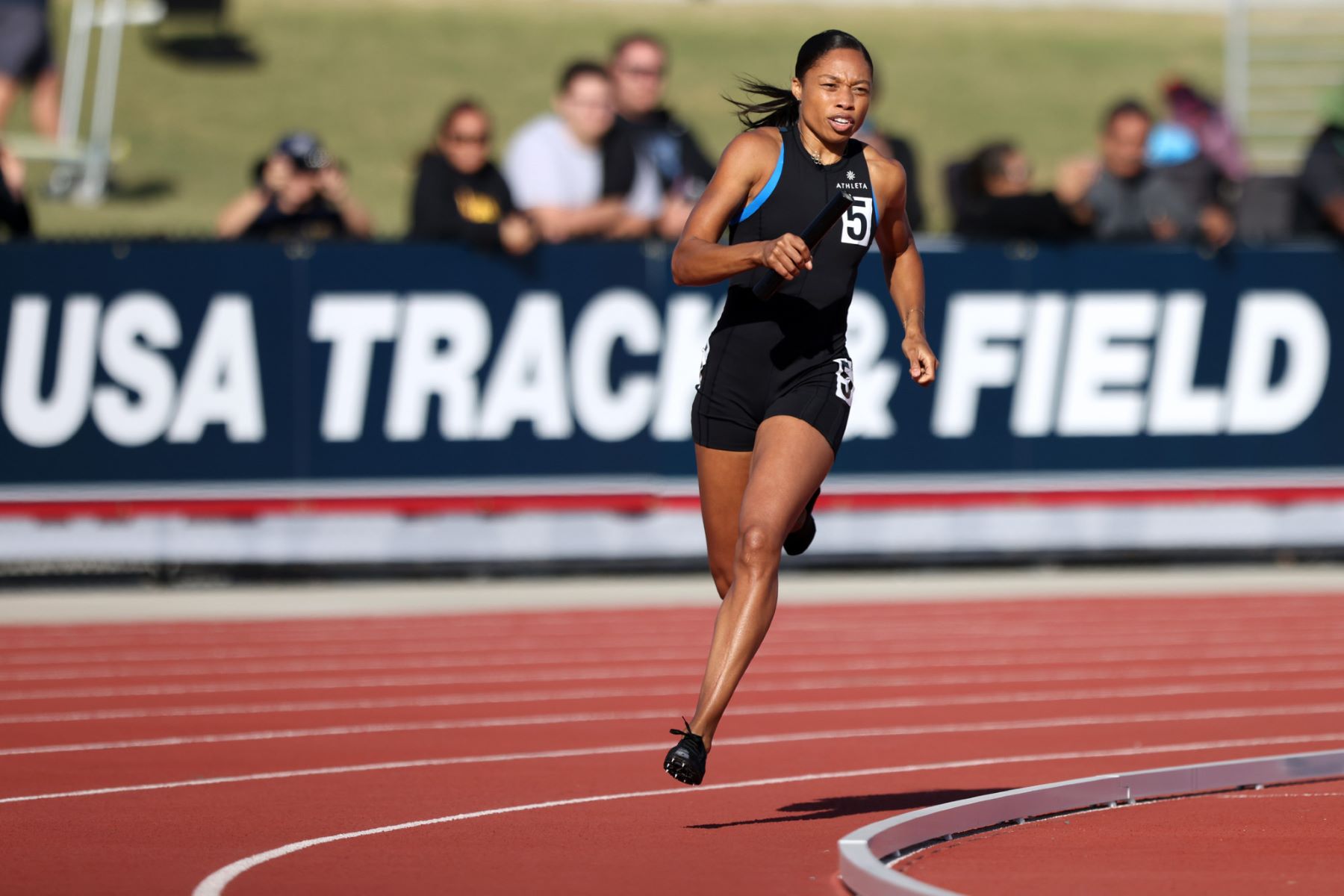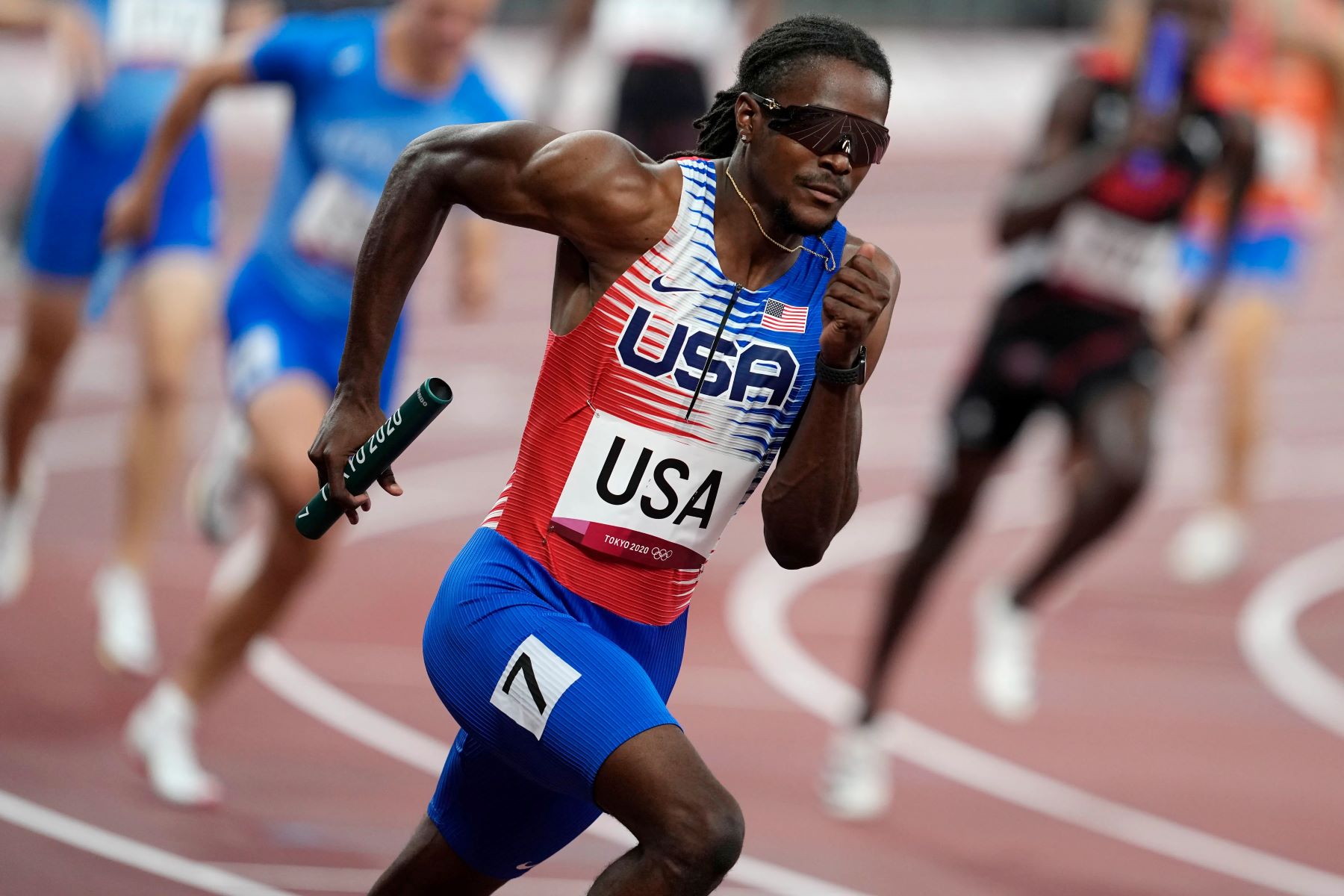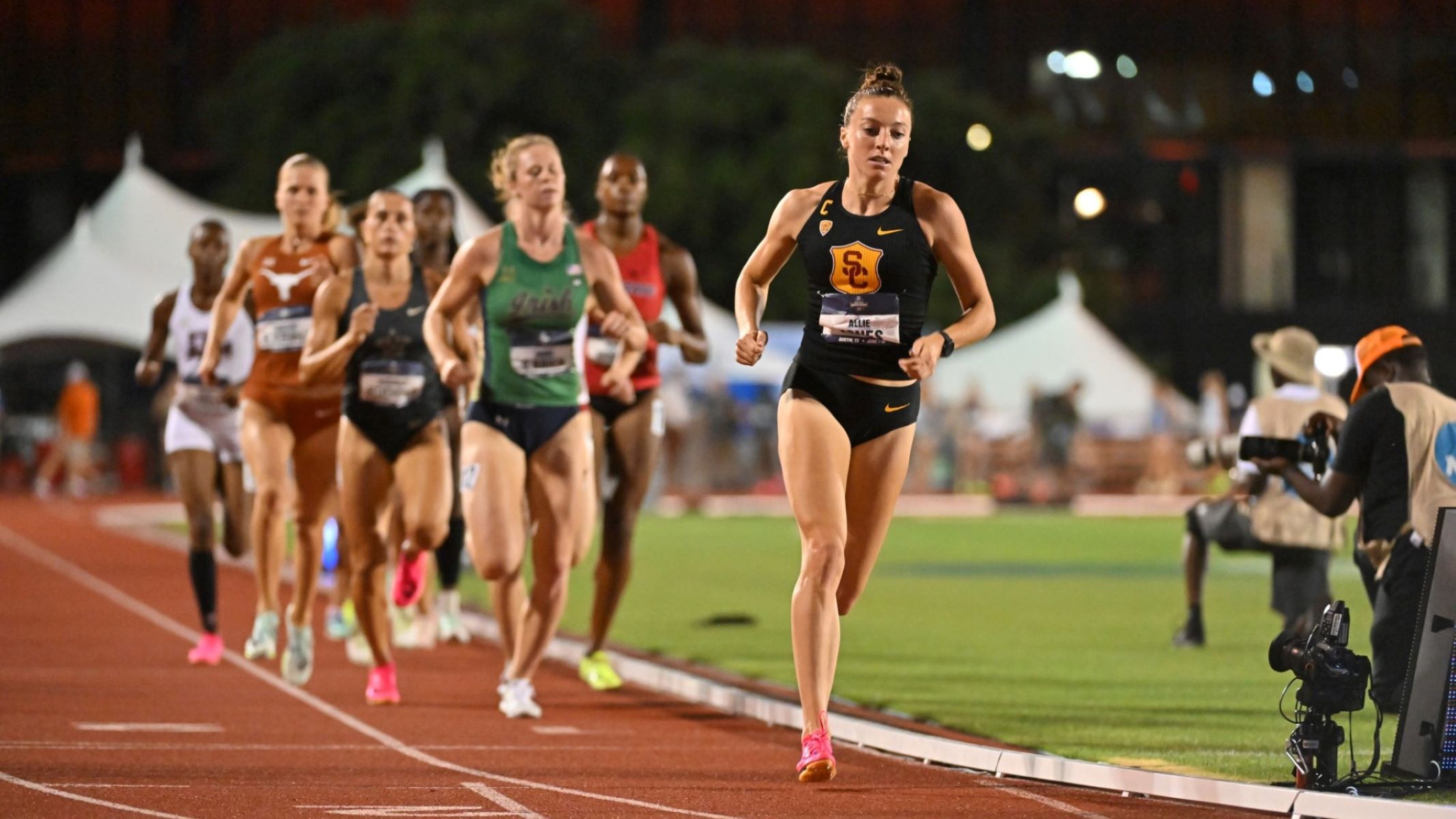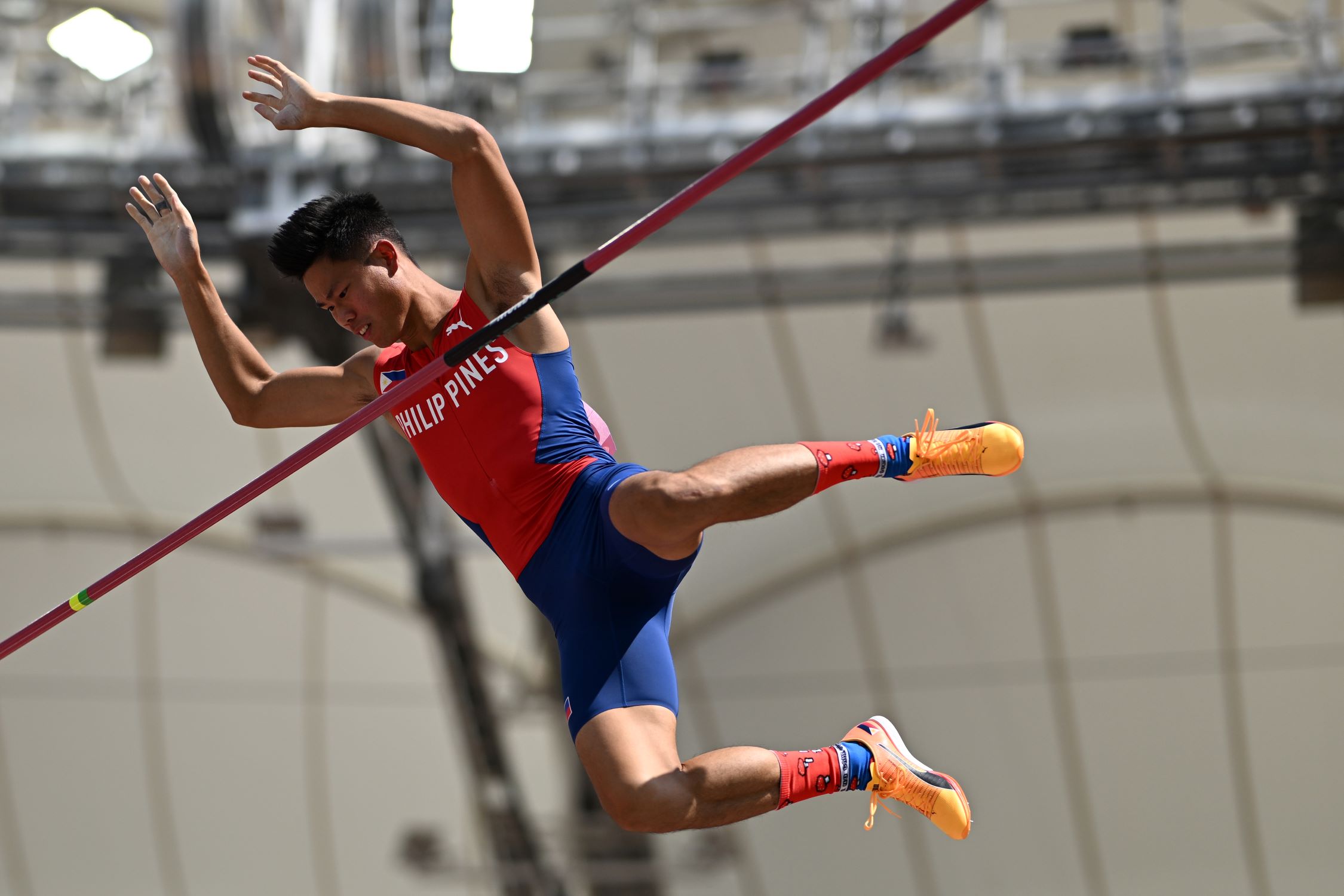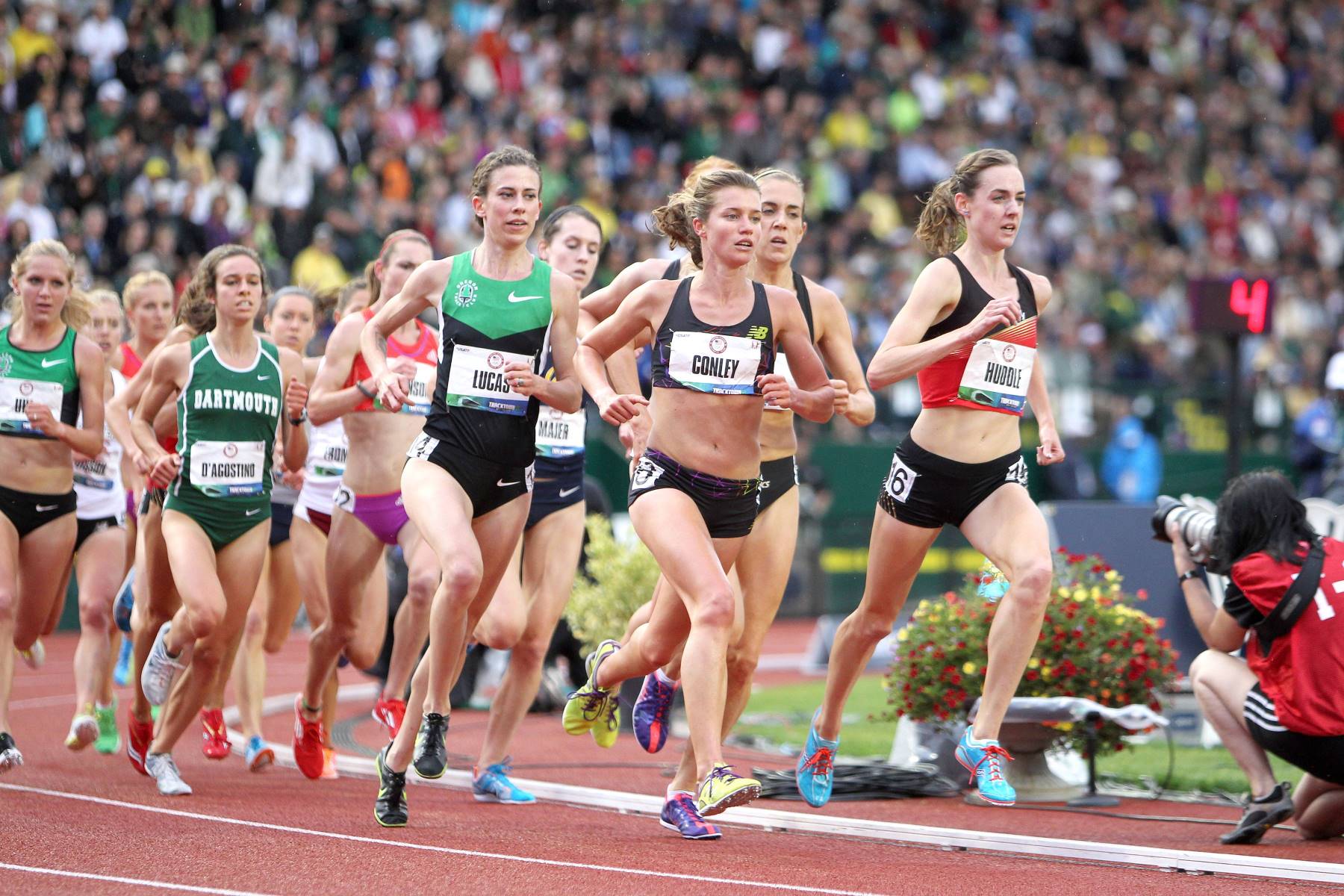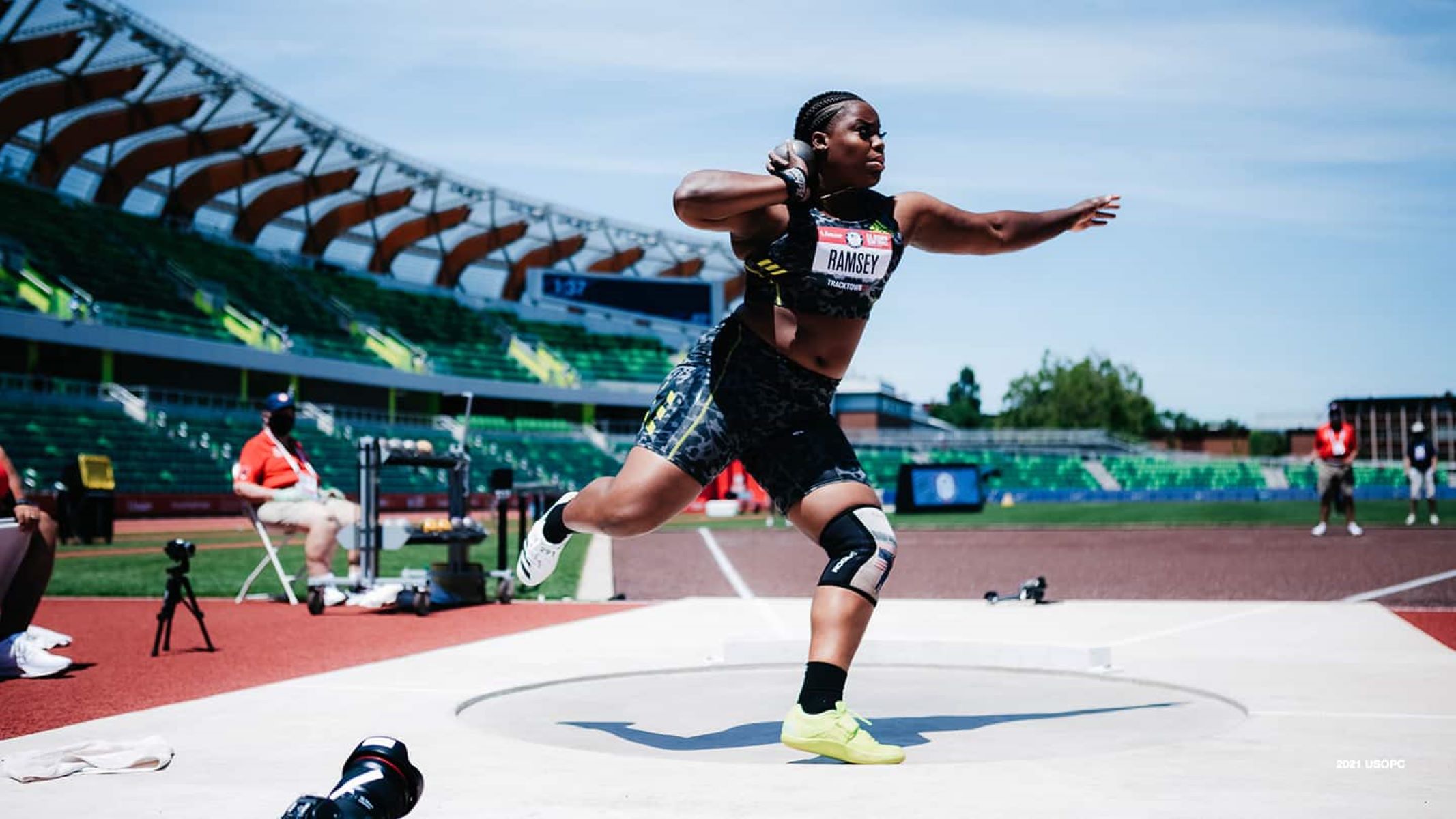

Featured
What Is A Shot Put In Track And Field
Published: September 5, 2023
Learn all about the shot put in track and field, including rules, techniques, and training tips. Find out how to become a featured shot put athlete and excel in this challenging event.
Introduction
Track and field is a sport that encompasses various disciplines, each with its own unique set of skills and techniques. One such discipline is shot put, a dynamic and powerful event that tests an athlete’s strength and explosive ability. Shot put traces its roots back to ancient Greece, and it has been a part of the modern Olympic Games since their inception. In this article, we will delve into the fascinating world of shot put, covering its history, basics, equipment, technique, training, records, and notable athletes.
Shot put involves throwing a heavy spherical object, known as the shot, as far as possible within a designated throwing area. The objective is to achieve the longest distance among all competitors. The origins of shot put can be traced back to the ancient Olympic Games, where it was included in the pentathlon, a five-event competition. However, the modern form of shot put began to develop during the 19th century in England.
Today, shot put is a discipline that requires athletes to combine strength, speed, and technique to achieve maximum performance. As with any sport, shot put has its own set of rules and regulations that govern the competition. From the size and weight of the shot to the throwing techniques and fouls, adherence to these rules is essential for fair play and the safety of the athletes.
In order to excel in shot put, athletes must undergo rigorous training programs that focus on building strength, explosiveness, and technique. Various exercises, such as weightlifting, plyometrics, and specific shot put drills, are incorporated into these training regimens. Additionally, mental preparation and strategic planning play a crucial role in an athlete’s success in shot put.
Shot put has witnessed incredible achievements over the years, with remarkable records being set by some of the greatest athletes in the sport. These records serve as milestones and benchmarks for aspiring shot putters looking to make their mark in the discipline. The competition in shot put is fierce and captivating, with athletes pushing the boundaries of human performance.
Throughout this article, we will explore the history, techniques, training, records, and notable athletes in the thrilling world of shot put. Whether you are a fan of track and field or simply curious about this intriguing sport, join us as we dive into the captivating dynamics of shot put.
History of Shot Put
The origins of shot put can be traced back to ancient Greece, where it was featured as part of the pentathlon, alongside long jump, discus throw, javelin throw, and running. However, the ancient Greeks used stones instead of metal shots, and the goal was primarily to achieve distance rather than technique or form.
In the 16th century, shot put began to evolve into a more organized sport. British soldiers and sailors would compete in “putting the stone” contests, using cannonballs or rounded stones. These early forms of shot put were practiced primarily to test strength and were often part of military training regimes.
The modern form of shot put started to take shape during the mid-19th century in England. The first official rules were established in 1866 by the Amateur Athletic Club of England. These rules standardized the weight and dimensions of the shot, as well as the technique used for throwing.
Shot put made its Olympic debut in the inaugural modern Olympic Games held in Athens, Greece, in 1896. Initially, only men could participate in shot put competitions, but women’s shot put was added to the Olympic program in 1948.
Over the years, the weight and dimensions of the shot have undergone various changes to ensure fair competition and accommodate different age groups and skill levels. Currently, the men’s shot weighs 7.26 kilograms (16 pounds) and measures 110-130 millimeters in diameter, while the women’s shot weighs 4 kilograms (8.8 pounds) and measures 95-110 millimeters in diameter.
Shot put has evolved from a test of pure strength to a sport that requires a combination of strength, technique, and explosive power. Athletes now employ advanced throwing techniques, such as the glide and the spin, in order to generate maximum momentum and achieve greater distance.
Today, shot put is a highly competitive event in track and field, attracting athletes from all around the world. It continues to captivate audiences with its impressive displays of strength and skill, and it remains an integral part of the Olympic Games and other major athletic competitions.
Basics of Shot Put
Shot put is a throwing event in track and field where athletes compete to throw a heavy spherical object, called a shot, as far as possible. The event requires a combination of strength, speed, technique, and precision. Here are the basic elements involved in shot put:
- The Shot: The shot is made of metal and comes in varying weights for men and women. It is typically round and solid, with a smooth surface. Athletes grip the shot with their fingers and place it against the neck under their chin for a proper throwing position.
- The Throwing Circle: Shot put takes place within a throwing circle made of a steel ring. The dimensions of the throwing circle may vary depending on the level of competition, but it is typically 2.135 meters (7 feet) in diameter. Athletes must start their throw from inside the circle and are not allowed to leave it until the shot lands.
- The Technique: Shot put techniques involve generating maximum force and momentum to propel the shot as far as possible. The two primary techniques used are the glide and the spin. The glide technique involves a linear movement across the circle, while the spin technique involves a rotational movement. Athletes choose the technique that best suits their strengths and preferences.
- The Approach: In shot put, athletes use an approach to build speed and generate momentum before releasing the shot. The approach consists of several steps or strides, taken with coordination and rhythm, leading up to the final explosive motion of the throw.
- The Release: The release is a crucial moment in shot put. Athletes must release the shot at the right point in their throw to maximize distance. The shot should be released with force and precision, utilizing the full extension of the arm and wrist.
Shot put is a highly technical event, and athletes must practice and perfect their technique to achieve optimal results. Training includes strength and power exercises to improve throwing ability, as well as drills and practice throws to refine technique and develop consistency.
In competition, athletes are allowed a predetermined number of attempts, usually six, to throw the shot as far as possible. The longest valid throw among all attempts is considered their best and is used for scoring and determining placement.
Shot put requires a unique combination of strength, technique, and explosive power. Athletes must possess a strong upper body, excellent footwork, and the ability to generate force efficiently. It is an exciting and dynamic event to watch, highlighting the physical prowess and skill of the competitors.
Equipment Used in Shot Put
Shot put is a sport that requires minimal equipment, but each piece plays a crucial role in the performance and safety of the athletes. Here are the key pieces of equipment used in shot put:
- The Shot: The shot is the main piece of equipment in shot put. It is a spherical object made of metal, typically iron or brass. The shot comes in different weights for men and women, ranging from 7.26 kilograms (16 pounds) for men to 4 kilograms (8.8 pounds) for women. The shot’s weight and size must meet the regulations set by the governing body of the competition.
- The Throwing Circle: The throwing circle is a steel ring where athletes perform their throws. It serves as a boundary for the competitors, and they must remain inside the circle until the shot lands. The throwing circle is typically 2.135 meters (7 feet) in diameter and is often made of a combination of steel and concrete to provide stability.
- The Toe Board: The toe board is located at the front edge of the throwing circle. Athletes position themselves against the toe board during their throws to ensure that they do not cross it prematurely. The toe board helps establish a consistent starting point for each throw and prevents athletes from gaining an unfair advantage by stepping out of the throwing area.
- The Starting Markers: Starting markers are used to indicate the positions where athletes can start their approach before the throw. They are typically placed outside the throwing circle and serve as a guide for athletes to begin their run-up or glide technique. Starting markers help maintain fairness and consistency in competition by ensuring all athletes have an equal opportunity to start their throws from the same distance.
- Protective Gear: Shot put athletes often wear protective gear to prevent injuries during training and competition. This may include padded gloves to help cushion the fingers and palm from the impact of the shot, as well as supportive shoes to provide stability and traction on the throwing surface.
- Measuring Tape: A measuring tape is used to determine the distance of each throw. Officials measure the distance from the edge of the landing area to the nearest mark made by the shot. Accurate measurements are important for determining rankings and records in shot put competitions.
It is essential that all equipment used in shot put meets the regulations set by the governing bodies of the sport. This ensures fair play and allows for accurate comparisons between athletes. Athletes should also regularly inspect their equipment to ensure it is in good condition and safe to use.
While shot put may seem simple in terms of equipment, the shot, throwing circle, toe board, starting markers, protective gear, and measuring tape play significant roles in the success and safety of shot put athletes. The proper use of this equipment enhances the performance and accuracy of throws, allowing athletes to showcase their skills to the fullest extent.
Technique and Rules of Shot Put
Shot put requires a combination of strength, speed, and proper technique to achieve maximum performance. Athletes must adhere to specific rules and guidelines to ensure fair competition and safety. Here are the key techniques and rules of shot put:
Throwing Techniques: There are two primary throwing techniques used in shot put: the glide and the spin.
- The Glide: The glide technique involves a linear movement across the throwing circle. The athlete starts in a modified squat position with their back facing the direction of the throw. They initiate the throw by pushing off from the back of the circle, using a series of gliding steps to build momentum. The athlete then extends their arm and releases the shot at the optimal point to achieve maximum distance.
- The Spin: The spin technique, also known as the rotational technique, involves a rotational movement within the throwing circle. Athletes begin with their back facing the direction of the throw. They initiate the throw by spinning in a series of quick, controlled turns, shifting their weight from the back to the front foot. The athlete then extends their arm and releases the shot while maintaining balance and generating maximum power.
Rules of Shot Put: Shot put competitions follow specific rules and regulations to ensure fair play and standardization:
- Each athlete is allowed a certain number of attempts, usually six, to throw the shot as far as possible. The best valid throw among all attempts is considered their mark for scoring purposes.
- Athletes must start their throw from within the throwing circle and must not leave the circle until the shot lands. Stepping on or over the toe board before the shot is released results in a foul throw.
- At the moment of release, the shot must be held with one hand and pushed, not thrown or slung. The shot must be released from above the height of the shoulder.
- Throws that land outside the sector lines, which define the designated landing area of the shot, are considered foul throws and do not count towards the final distance.
- For a throw to be valid, the athlete must remain behind the foul line until the shot lands. If an athlete touches or crosses the sector lines or the landing area before the shot lands, it is considered a foul throw.
- Judges or officials measure the distance of each valid throw from the edge of the landing area to the nearest mark made by the shot. The farthest measured distance is considered the athlete’s best mark.
Shot put competitions are regulated by governing bodies such as World Athletics (formerly known as the International Association of Athletics Federations or IAAF). These bodies ensure that the rules and regulations are upheld and followed in all levels of competition, including national, international, and Olympic standards.
Having a solid understanding of the throwing techniques and rules of shot put is essential for athletes to compete at their best and avoid penalties. Coaches, officials, and athletes work together to ensure fair play, uphold the integrity of the sport, and achieve outstanding performances in shot put.
Training for Shot Put
Shot put is a physically demanding sport that requires athletes to develop strength, speed, explosive power, and proper technique. Training programs for shot put are comprehensive and focus on various aspects to enhance performance. Here are the key elements of training for shot put:
- Strength Training: Shot put athletes must develop exceptional strength, especially in the upper body, core, and legs. Strength training exercises such as bench presses, squats, deadlifts, and overhead presses help build the necessary power and muscle mass to generate force during throws. Athletes also incorporate specific shot put exercises like med ball throws and chest passes to simulate the throwing motion and target specific muscle groups.
- Explosiveness and Power: Shot put throws require explosive power to propel the shot as far as possible. Plyometric exercises like box jumps, medicine ball slams, and explosive push-ups are incorporated into training programs to improve power output. Olympic lifts, such as power cleans and snatches, are also beneficial for developing explosive strength and coordination.
- Technique Drills: Shot put technique drills are essential for refining throwing form and improving consistency. These drills focus on footwork, timing, body position, and arm mechanics. Athletes may perform standing throws, standing rotations, or short glides/spins to isolate specific aspects of the throwing motion and reinforce proper technique.
- Throwing Practice: Regular throwing practice is crucial for shot put athletes to fine-tune their technique and develop muscle memory. Athletes work on their full approach, glide, or spin technique while progressively increasing the intensity and speed of their throws. They may also analyze video footage of their throws to identify areas for improvement and adjust their technique accordingly.
- Mental Preparation: Shot put requires mental focus, concentration, and the ability to handle pressure. Athletes work on mental preparation techniques such as visualization, goal-setting, and self-talk to enhance their mental game. They learn to stay calm and focused during competitions, manage anxiety, and maintain confidence in their abilities.
- Conditioning and Flexibility: Shot put athletes need to improve their overall conditioning to maintain stamina and limit fatigue during competitions. Cardiovascular activities like running, rowing, and cycling help improve endurance. Additionally, flexibility exercises, including stretching and mobility drills, are important to maintain a wide range of motion, help prevent injuries, and optimize throwing technique.
Shot put training programs are tailored to individual athletes based on their experience, strengths, and weaknesses. Athletes work closely with coaches who provide guidance, monitor progress, and make adjustments to training plans as needed. Regular assessments, feedback, and analysis help ensure that athletes are on track to achieve their performance goals.
Consistency and dedication are key in shot put training. Athletes must commit to regular training sessions, proper nutrition, and adequate rest and recovery. Building strength and improving technique takes time, so athletes should approach shot put training with a long-term perspective and set realistic, incremental goals to track their progress.
Through focused training and continuous improvement, shot put athletes can enhance their performance, reach their full potential, and achieve success in this challenging and exhilarating sport.
Important Shot Put Records
Shot put records serve as milestones and benchmarks in the sport, showcasing the exceptional achievements of shot put athletes over the years. These records represent the farthest distances thrown by both men and women, and they inspire athletes to push their limits and aim for new heights. Here are some of the most notable shot put records:
- Men’s World Record: The current men’s world record in shot put is held by American athlete Randy Barnes. On May 20, 1990, at the Jack in the Box Invitational in West Los Angeles, Barnes set the record with a throw of 23.12 meters (75 feet 10¼ inches). This astonishing mark remains unbroken for over three decades, a testament to Barnes’ exceptional power and technique.
- Women’s World Record: The women’s world record in shot put is held by Natalya Lisovskaya of the Soviet Union. On June 7, 1987, at the Moscow Challenge, Lisovskaya achieved a record-breaking throw of 22.63 meters (74 feet 3¼ inches). Her remarkable performance continues to stand as the highest mark ever recorded in women’s shot put.
- Men’s Olympic Record: The men’s Olympic record in shot put is held by American athlete Ryan Crouser. At the 2016 Olympic Games in Rio de Janeiro, Brazil, Crouser unleashed a monstrous throw of 22.52 meters (73 feet 10¾ inches) in the final round of the competition, securing the gold medal and setting a new Olympic record.
- Women’s Olympic Record: The women’s Olympic record in shot put is held by Ilona Slupianek from East Germany. Slupianek achieved a throw of 22.41 meters (73 feet 6¼ inches) at the 1980 Olympic Games in Moscow, earning her the gold medal and establishing a record that still stands today.
These records highlight the tremendous performances and extraordinary athleticism of shot put legends. They inspire current and future shot put athletes to continually strive for excellence and surpass the existing standards.
It is worth noting that shot put records are not just limited to the world or Olympic level. National and continental records are also highly regarded within their respective regions. These records provide insight into the incredible achievements of shot put athletes from various countries and serve as sources of national pride and inspiration.
As the sport progresses and new talents emerge, it is always exciting to witness the breaking of records. Shot put remains a dynamic and fiercely competitive event, where athletes continue to defy expectations and redefine the limits of human performance.
Notable Shot Put Athletes
Shot put has seen the rise of many exceptional athletes who have left an indelible mark on the sport. These athletes have displayed incredible strength, technique, and consistency, achieving remarkable successes in shot put competitions around the world. Here are some of the most notable shot put athletes:
- Randy Barnes: Randy Barnes, known for his explosive power, holds the men’s world record in shot put. A dominant force in the 1980s and 1990s, Barnes won numerous championships, becoming the World Indoor Champion seven times and earning an Olympic silver medal in 1988.
- Valerie Adams: New Zealand’s Valerie Adams is one of the most accomplished shot put throwers in history. An Olympic gold medalist and four-time World Champion, Adams maintained a remarkable winning streak for almost a decade, from 2006 to 2016.
- Tom Walsh: Hailing from New Zealand, Tom Walsh burst onto the shot put scene with his impressive performances. He won the gold medal at the 2018 World Indoor Championships and the bronze medal at the 2016 Rio Olympics. Walsh continues to excel, consistently ranking among the top shot put athletes in the world.
- Shot put icon: German athlete Udo Beyer left a lasting impact on the sport with his remarkable achievements. Beyer won multiple Olympic and World Championship medals, including the gold medal at the 1976 Montreal Olympics. He set multiple world records throughout his career, solidifying his status as one of the greatest shot putters of all time.
- Michelle Carter: American athlete Michelle Carter made history by becoming the first American woman to win an Olympic gold medal in shot put. She achieved this feat at the 2016 Rio Olympics with a clutch final throw that secured victory. Carter has also enjoyed success at the World Championships, earning multiple medals throughout her career.
- Tomasz Majewski: Polish athlete Tomasz Majewski had a stellar shot put career, winning gold medals at both the 2008 Beijing Olympics and the 2012 London Olympics. Majewski consistently performed at a high level in major championships and made a significant impact on the sport.
These athletes represent a small fraction of the incredible talent that has graced shot put over the years. Each athlete has contributed to the sport’s rich history through their exceptional performances, dedication, and the ability to push the boundaries of what is possible in shot put.
Not only have these athletes achieved great individual success, but they have also inspired countless aspiring shot put athletes around the world. Their dedication and achievements serve as role models and sources of motivation for the next generation of shot putters.
As the sport continues to evolve, new athletes will undoubtedly emerge, leaving their own mark on shot put and further expanding its legacy. Shot put remains a captivating and fiercely competitive event, thanks to the talent and determination of these notable athletes.
Conclusion
Shot put is a fascinating discipline within the world of track and field, requiring a unique blend of strength, technique, and explosive power. The sport has evolved significantly over the years, from its origins in ancient Greece to the modern-day competitions witnessed in the Olympic Games and other prestigious events.
In this article, we explored the rich history of shot put, from its early beginnings as a test of strength to its establishment as a competitive sport. We learned about the basics of shot put, including the equipment used, throwing techniques, and the rules and regulations that govern the event.
We also delved into the training aspect of shot put, understanding the importance of building strength, explosiveness, and perfecting technique through focused training programs. Mental preparation, flexibility, and conditioning were identified as key elements in an athlete’s journey towards shot put success.
Furthermore, we acknowledged the impact of remarkable shot put records, both at the world and Olympic level. These outstanding achievements serve as a source of motivation for current and future athletes, pushing them to surpass existing standards and reach new heights.
Finally, we recognized the contributions of notable shot put athletes who have left an indelible mark on the sport. Through their exceptional performances and remarkable accomplishments, these athletes have not only elevated the level of competition but also inspired aspiring shot putters worldwide.
Shot put continues to captivate audiences with its displays of strength, technique, and power. As the sport progresses, new records will be set, and new athletes will rise to prominence, further cementing the legacy of shot put.
Whether you are a fan of track and field or simply intrigued by the intricacies of shot put, this article has provided you with a comprehensive understanding of the sport. So, keep an eye on shot put competitions and witness the incredible performances of athletes as they push themselves to achieve greatness in this dynamic and thrilling discipline.




